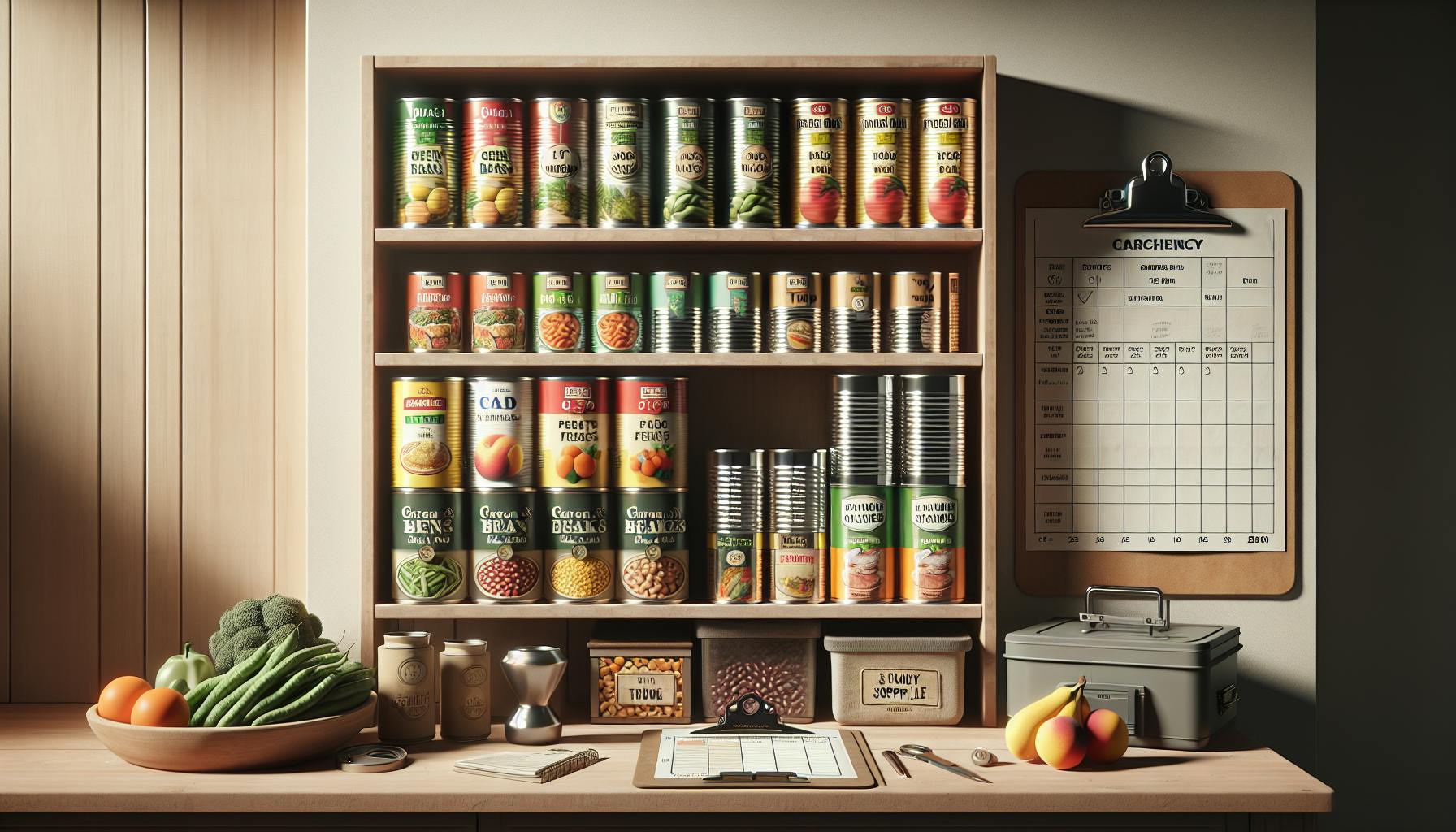Introduction to Flour Shelf Life for Preppers
Having a reliable supply of flour is absolutely essential for any prepper's pantry. As one of the most versatile ingredients, flour can be used for baking nutritious breads and muffins, thickening savory sauces and stews, dredging meats before cooking, making pasta dough and pizza crusts, and countless other important preparations. However, like any dry good, flour has a limited shelf life that requires proper storage and rotation to maximize freshness.
Different types of flour have varying shelf lives, but with the right conditions most can last over a year before spoiling. All-purpose white flour typically lasts 6-8 months past the printed expiration date if stored properly. Whole wheat flours have a shorter 4-6 month shelf life due to their higher oil content. By using best practices for cool, dry storage in airtight containers, preppers can extend the shelf life of flour well beyond these estimates and avoid waste due to spoilage.
This comprehensive guide will provide tips on ideal storage temperatures, recommended containers for short and long-term needs, signs of flour going bad, and how to incorporate flour rotation into emergency preparedness plans. Having the knowledge to store flour correctly can make a major impact on nutrition and morale when supplies run low.
The Critical Role of Flour in a Prepper's Pantry
Flour is one of the most versatile ingredients to stockpile because it can be used in so many essential ways when cooking with limited supplies:
-
Flour allows you to bake nutritious breads, tortillas, muffins, pancakes, and more to supplement food stocks.
-
With the right flour, you can thicken savory sauces, stews, gravies and chilies for added nutrition and flavor.
-
Flour is perfect for dredging meats before frying or baking to seal in moisture and add a crispy coating.
-
Having flour allows you to make dough for pastas, pizza crusts, pie crusts, dumplings, and other important staples.
-
Mix with salt, herbs and water to make quick flatbreads over a campfire or grill.
-
Use as a binder when forming veggie or meat patties from limited ingredients.
-
Substitute flour for corn starch to thicken up pan drippings into gravy for extra flavor and calories.
-
Make roux with butter or oil as a flavorful base for sauces, gumbos, and hearty one-pot meals.
When stockpiling flour, consider storing types you use regularly as well as experimenting with alternatives. Having the right flour on hand gives you flexibility and options when supplies are limited.
How Long Does Flour Last With Proper Storage?
With the appropriate storage methods, most types of flour can last between 1-5 years before going rancid or moldy:
-
All-purpose white flour lasts 6-8 months past the printed expiration date if stored in proper cool, dry conditions.
-
Whole wheat flours last roughly 4-6 months due to their higher oil content which shortens shelf life.
-
Flour properly sealed in Mylar bags with oxygen absorbers can last 5+ years in ideal conditions.
-
Freezing flour in airtight packaging can extend its shelf life to 1 year or longer.
-
Heat, humidity and opening packaging reduces shelf life substantially.
Signs that flour has spoiled include color changes, musty odors, visible mold, bitterness, and lumping or drying out. Following proper storage techniques is key to preventing spoilage.
Maximizing Shelf Life Through Proper Storage
To get the most out of your flour supply, use these proper storage tips:
-
Keep flour in airtight containers in a cool, dark pantry away from heat and moisture. Ideal conditions are 60-70°F and less than 60% humidity.
-
Transferring flour from bags to hard plastic containers with tight lids prevents air exposure. Gamma Seal lids or Scepter jugs work well.
-
Consider storing a portion of flour in the refrigerator or freezer for longer shelf life. Use airtight freezer bags or containers.
-
Avoid humidity which can cause flour to clump and spoil prematurely.
-
Do not store flour above or near ovens, as the heat can accelerate spoilage.
-
Keep flour away from direct sunlight which can generate unwanted heat and moisture.
Following proper storage guidelines in cool, dry conditions helps maintain flour quality and extend shelf life for emergency use.
Recommended Containers for Flour Storage
For short term kitchen use, opaque plastic containers or glass canning jars both work well for flour storage.
For bulk storage, preppers often use:
-
5 gallon plastic buckets with rubber gasket Gamma Seal lids for airtight sealing.
-
Mylar bags with oxygen absorbers to remove oxygen before sealing for long term viability.
-
Vacuum sealing bags or canning jars to maximize shelf life by removing air exposure.
-
Food-grade plastic bins or stackable containers with tight lids are great for easy access and organization.
-
For freezer storage, airtight plastic containers or double-wrapped freezer bags protect flour from moisture.
Proper containers are critical for maintaining ideal storage conditions and preventing spoilage or waste.
Signs Your Flour Has Gone Bad
Watch for these indicators that your stored flour has spoiled:
-
Color changes from white to yellow, grey or greenish hues
-
An unpleasant, musty, stale or moldy odor
-
Visible mold presents itself on the flour
-
Severe clumping or drying out
-
Flour has a bitter, sour or rancid taste
-
Expiration date has long since passed
Discard any flour at the first signs of moisture, odor, mold or other red flags. Do not take chances with rancid flour as it can cause illness.
Tips for Properly Storing Flour as a Prepper
Use these best practices for stockpiling and storing flour for short term kitchen needs as well as longer term emergency preparedness.
Storing Flour for Short-Term Use
For flour you plan to use within 3-6 months:
-
Transfer to airtight plastic or glass containers with tight lids.
-
Write the purchase date and date container was opened.
-
Store in a cool, dark pantry around 60-70°F.
-
Inspect monthly and check freshness by scent and taste.
-
Discard any flour showing signs of moisture, clumping or mold.
Storing Flour for Medium-Term Use
For storage up to one year:
-
Place flour in airtight plastic freezer bags or containers.
-
Remove as much air as possible and seal tightly.
-
Label with type of flour and dates frozen.
-
Store flat in the freezer at 0°F. Avoid temperature fluctuations.
-
Allow flour to thaw in the refrigerator before use.
Storing Flour for Long-Term Emergency Use
For flour that is part of your long term stockpile:
-
Transfer to Mylar bags and add oxygen absorbers to remove oxygen, then seal.
-
Place sealed Mylar bags in food grade 5 gallon buckets with rubber gasket lids.
-
Label buckets with contents and packing date for easy rotation.
-
Store buckets in a cool, dark place like a basement or cellar.
-
Use and replace buckets as you rotate through kitchen supply.
Signs Your Stored Flour Has Spoiled
Be alert for these signs of spoiled flour:
-
Any mold, moisture, or condensation inside packaging
-
An unpleasant or "off" smell when container is first opened
-
Discoloration from white to yellow, grey or green hues
-
Lumping, caking or drying out
-
An unappealing or bitter taste when sampled
What To Do If Your Flour Has Gone Bad
If you find your flour has spoiled:
-
Discard it immediately to avoid accidental consumption.
-
Do not attempt to cook with flour that is rancid or moldy.
-
Thoroughly clean storage containers before re-use.
-
Review your storage methods to prevent spoilage going forward.
With proper techniques, preppers can keep flour supplies fresh for emergency use when it matters most.
Key Takeaways on Maximizing Flour Shelf Life
-
Store flour in airtight containers in cool, dry conditions between 60-70°F.
-
Consider freezing portions for medium to long term storage up to 1 year.
-
Use Mylar bags and oxygen absorbers for viable long term emergency food storage.
-
Inspect flour supply every 2-3 months for signs of moisture, mold, or spoilage.
-
Discard rancid flour immediately and avoid consumption to prevent illness.
With the right storage methods, preppers can keep a plentiful flour supply on hand for emergency cooking needs. Follow these tips to safely extend flour's shelf life for your prepper pantry.


